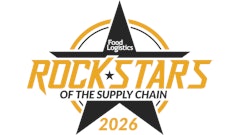
Supply chains today are increasingly intricate due to globalization, demand for real-time data, disruptions from natural disasters and geopolitical events, and evolving regulatory landscapes. For the food industry, challenges such as perishability and compliance amplify these complexities. Successfully navigating these obstacles requires robust tools to track and monitor the movement of goods, information, and resources. Enhanced visibility is essential for operational efficiency, cost savings, and superior customer service. It allows businesses to anticipate disruptions, adapt to changing market dynamics, and make well- informed decisions.
As customer expectations for timely and accurate deliveries continue to rise, businesses need a clear understanding of their operations. Real-time tracking and monitoring enable companies to provide delivery timelines, reducing the risk of delays and misinformation. With improved visibility, businesses can maintain consistent service levels and meet customer needs, reinforcing trust and reliability.
Visibility also mitigates risks and improves resilience. In a world shaped by unpredictable events, businesses require tools to anticipate and address potential issues before they escalate. By leveraging visibility solutions, organizations gain actionable insights that ensure continuity, efficiency, and long-term stability.
Challenges in achieving supply chain visibility
Gaining end-to-end visibility remains challenging for many organizations. Companies often operate with disconnected systems that fail to communicate effectively, leading to fragmented and siloed data. This lack of integration restricts decision-making and limits operational flexibility.
Legacy systems compound the problem by lacking the capabilities required for real-time tracking and holistic supply chain oversight. Additionally, complex networks involving multiple stakeholders, regions, and transportation modes create further visibility gaps.
To overcome these hurdles, implementing a transportation management system (TMS) that supports their business needs is essential. A TMS unifies data from disparate sources, providing a comprehensive view of operations. This is particularly critical for managing multimodal shipments-spanning rail, truck, ocean, and barge-to ensure efficiency, compliance, and resource optimization.
Best practices in supply chain visibility with a TMS
Adopting a TMS to achieve supply chain visibility involves implementing strategic practices tailored to address unique operational needs.
Integrated data management. A TMS centralizes supply chain data, eliminating silos and fostering collaboration across teams. This integrated approach provides a single source of truth, enabling stakeholders to make informed decisions and coordinate seamlessly. For bulk shippers managing diverse shipment types, having a unified platform ensures operational clarity and alignment.
Real-time tracking. Internet of Things (IoT) devices and GPS trackers embedded within shipments deliver real-time insights into their location and condition. This proactive approach allows businesses to address potential issues quickly, minimizing disruptions. For example, real-time monitoring is critical for ensuring the timely delivery of temperature-sensitive goods or mitigating delays in rail shipments.
Proactive risk management. Predictive analytics tools within a TMS help identify potential risks such as weather-related disruptions or equipment shortages. By analyzing historical data and current trends, businesses can anticipate challenges and implement preemptive measures. This level of foresight is especially valuable for industries where delays can have significant financial and operational impacts.
Multimodal integration. Managing shipments across multiple transportation modes is a hallmark of bulk and break-bulk logistics. A TMS supports seamless integration across rail, truck, ocean, and barge operations, optimizing resource allocation and reducing inefficiencies. This capability is essential for businesses aiming to reduce detention charges, enhance railcar utilization, and maintain timely deliveries.
Regulatory compliance. Navigating the regulatory environment requires precision and attention to detail. A TMS simplifies compliance by automating documentation and reporting processes, ensuring adherence to local and international standards. This functionality minimizes the risk of penalties and supports smooth cross-border operations.
Stakeholder training. To maximize a TMS's potential, employees and partners must understand its capabilities. Comprehensive training ensures teams can use the system effectively to extract actionable insights, streamline processes, and achieve operational goals.
Performance monitoring. Regularly evaluating metrics such as on-time delivery rates, inventory levels, and transit times helps businesses identify areas for improvement. Monitoring these KPIs supports continuous optimization and ensures alignment with strategic objectives.
Benefits of supply chain visibility in transportation processes
The advantages of achieving supply chain visibility are significant, particularly for businesses managing complex logistics or multimodal operations. Key benefits include:
· Improved operational efficiency. Visibility into asset locations and shipment statuses allows businesses to optimize use of vehicles and other resources. Coordinated loading and unloading schedules, for example, reduce detention costs and prevent bottlenecks.
· Cost savings. By eliminating inefficiencies and enhancing process automation, businesses can reduce expenses and allocate team members more effectively.
Enhanced customer satisfaction. Accurate tracking and timely deliveries foster trust and strengthen customer relationships. Transparent communication ensures stakeholders remain informed throughout the process.
· Risk mitigation. Proactively addressing disruptions minimizes downtime and maintains operational continuity. Early identification of potential issues allows for swift corrective actions.
- Informed decision-making. Access to comprehensive, real-time data enables strategic planning and execution. This data-driven approach supports adaptability and long-term success.
In today’s dynamic marketplace, supply chain visibility is no longer optional. A TMS provides a robust platform for managing transportation and logistics needs of business with simple or complex processes. By adopting these practices and technologies, businesses can navigate challenges, enhance operational efficiency, and achieve sustainable growth.







![Top Tech Logo Vertical [color]](https://img.foodlogistics.com/files/base/acbm/scn/image/2024/11/top_tech_logo_Vertical__color_.672d2a7c2733d.png?auto=format%2Ccompress&bg=fff&fill-color=fff&fit=fill&h=167&q=70&w=250)











